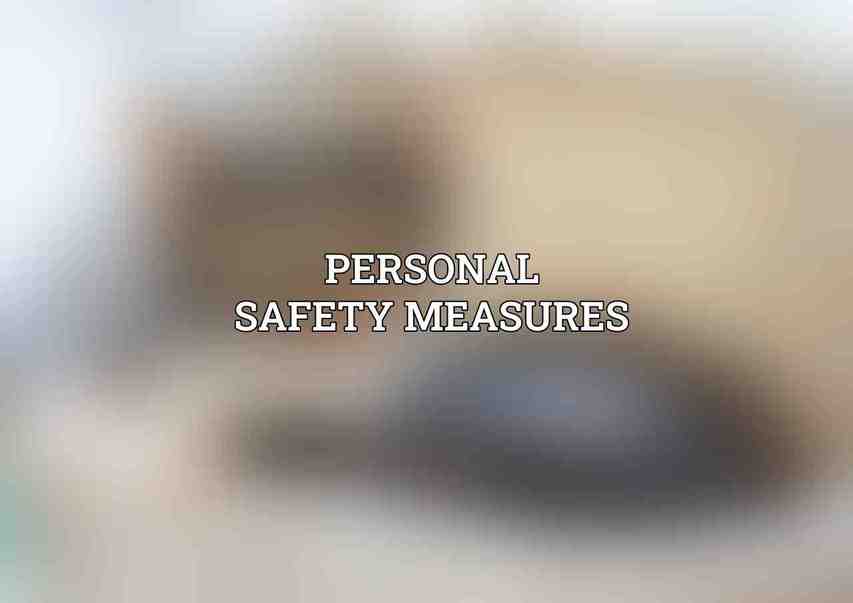Home invasions can be a terrifying experience for any homeowner. Understanding the tactics commonly used by intruders is essential in taking proactive steps to prevent such incidents.
A. Common Entry Points
Intruders often target common entry points such as doors and windows. These areas are prime targets for forced entry due to potential vulnerabilities in locks or security measures.
B. Time of Day and Seasonality
Time of day plays a significant role in home invasion tactics. Intruders may choose nighttime for cover of darkness or daytime when homes are more likely to be empty. Additionally, seasonality can impact invasion patterns, with longer nights in winter providing more opportunities.
C. Target Demographics and Motives
Understanding the target demographics of home invaders can help homeowners assess their risk. Homes with high visibility, valuable assets, or absent homeowners are often targeted. Motives for home invasions can range from theft of valuables to more violent intentions.
Physical Deterrents

Implementing physical deterrents is crucial in fortifying your home against potential intruders.
A. Secure Doors and Windows
Securing doors and windows is the first line of defense against home invasions. Utilize deadbolts and strike plates for added reinforcement, along with door and window alarms for immediate alerts. Consider installing reinforcement bars and window locks to further strengthen entry points.
B. Lighting and Landscaping
Well-placed lighting and landscaping can deter intruders by eliminating hiding spots and increasing visibility.
- Motion-activated floodlights are effective in illuminating dark areas.
- Maintain trimmed bushes and remove overgrown vegetation to eliminate potential hiding places.
- Set up outdoor lighting with timers to create the illusion of occupancy when you are away.
C. Security Systems
Investing in a reliable security system can provide added protection for your home.
- Install alarms with motion detectors and loud sirens to scare off intruders.
- Utilize video surveillance cameras to monitor activity around your property.
- Consider home automation systems that allow remote monitoring and control of security features.
Personal Safety Measures

In addition to physical deterrents, personal safety measures are essential in preventing home invasions.
A. Secure Home When Leaving
Before leaving your home unattended, take precautions to secure it properly.
- Lock all doors and windows to prevent easy access.
- Disable garage door openers to avoid unauthorized entry.
- Unplug electronics to reduce fire hazards and potential theft.
B. Screen Visitors
Screening visitors can help prevent unauthorized individuals from gaining entry to your home.
- Utilize a door intercom or video doorbell to verify the identity of visitors.
- Always confirm the identity of unknown individuals before allowing them into your home.
C. Avoidance of High-Risk Situations
Awareness of high-risk situations and suspicious activities can help you avoid potential threats.
- Avoid opening doors to strangers without verifying their identity.
- Stay alert and be aware of any suspicious activity in your neighborhood.
- Report any concerning behavior or individuals to the authorities promptly.
Community Involvement
Community involvement plays a significant role in enhancing the safety and security of neighborhoods.
A. Neighborhood Watch Programs
Participating in neighborhood watch programs can increase surveillance and create a sense of community security.
- Organize surveillance efforts by residents to monitor neighborhood activity.
- Establish community emergency alert systems for immediate communication in case of threats.
B. Reporting Suspicious Activity
Collaborating with local authorities and community organizations is vital in addressing potential security threats.
- Report any suspicious activity to the local police or sheriff’s office.
- Inform your homeowners association or neighborhood coordinator of any security concerns.
C. Community Safety Programs
Engaging in community safety programs can provide valuable resources and education on crime prevention.
- Attend crime prevention workshops to learn effective security measures.
- Participate in home security assessments to identify vulnerabilities and improve safety measures.
Other Protective Measures
Incorporating additional protective measures can further safeguard your home and belongings.
A. Keep Valuables Out of Sight
Securing valuables and minimizing their visibility can reduce the likelihood of theft.
- Store valuables in a safe or lockbox to hinder access by intruders.
- Avoid displaying substantial amounts of cash or valuable jewelry in plain sight.
B. Consider Home Defense Tools
In situations where personal safety is at risk, having home defense tools can provide an added layer of protection.
- Consider carrying pepper spray or a stun gun for self-defense.
- If legally permitted and appropriate, owning a firearm for home protection may be an option.
C. Develop an Escape Plan
Preparing an escape plan in case of emergencies or home invasions is crucial for ensuring the safety of your household.
- Identify and mark multiple escape routes from different areas of your home.
- Practice escape drills with family members to ensure everyone knows what to do in a crisis situation.
By implementing a combination of physical deterrents, personal safety measures, community involvement, and other protective measures, homeowners can significantly reduce the risk of home invasions. Prevention is key in safeguarding your home and family from potential threats.
For more information on home security products and services, consider exploring resources from reputable companies such as ADT and Ring. Remember, taking proactive steps today can help prevent home invasions in the future. Stay safe and secure!
Frequently Asked Questions
What are common entry points for home invasions?
Common entry points for home invasions include unlocked doors, windows, and garage doors. It’s important to always ensure these entry points are secured.
How can I make my home less attractive to potential intruders?
To make your home less attractive to intruders, make sure to keep your property well-lit, trim overgrown bushes or trees that could provide hiding spots, and install a security system with cameras.
What should I do if I suspect someone is trying to break into my home?
If you suspect someone is trying to break into your home, call 911 immediately and don’t confront the individual yourself. It’s important to prioritize your safety and let law enforcement handle the situation.
Are there any specific security measures I can take to prevent home invasions?
Yes, there are several security measures you can take to prevent home invasions, such as installing deadbolts on all exterior doors, using a timer to turn on lights when you’re not home, and getting a dog as a deterrent.
Should I tell my neighbors if I plan to be away from home for an extended period?
It’s generally a good idea to inform trusted neighbors if you plan to be away from home for an extended period. They can keep an eye on your property and alert you or authorities if they notice any suspicious activity.
wp:html –>
/wp:html –>
wp:html –>
/wp:html –>
